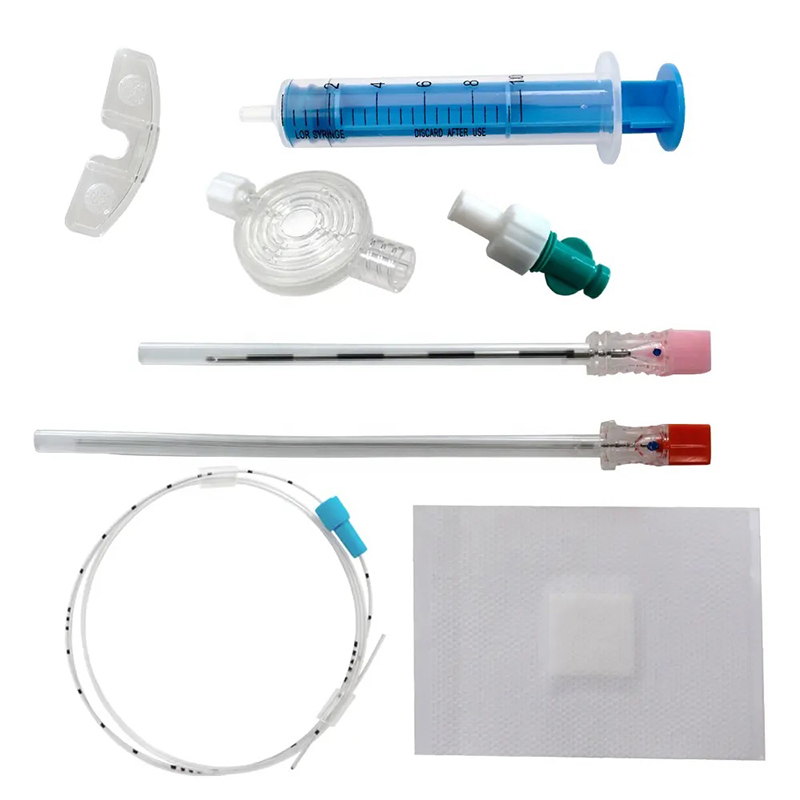Combined spinal and epidural anesthesia (CSEA) is an advanced anesthetic technique that merges the benefits of both spinal and epidural anesthesia, providing rapid onset and adjustable, long-lasting pain control. It is widely used in obstetrics, orthopedic, and general surgeries, especially when a precise balance of immediate and sustained pain relief is necessary. CSEA involves the insertion of an epidural catheter with an initial spinal injection, providing swift anesthesia onset through the spinal block while enabling continuous anesthetic delivery through the epidural catheter.
Advantages of Combined Spinal and Epidural Anesthesia
CSEA offers unique advantages, making it highly versatile in clinical settings:
1. Quick Onset with Long-Lasting Effects: The initial spinal injection ensures immediate pain relief, ideal for surgeries requiring rapid onset. Meanwhile, the epidural catheter allows for a continuous or repeatable anesthetic dose, maintaining pain relief throughout a lengthy procedure or post-operatively.
2. Adjustable Dosing: The epidural catheter provides flexibility to adjust the dose as needed, catering to the patient’s pain management needs throughout the procedure.
3. Reduced General Anesthesia Requirement: CSEA minimizes or eliminates the need for general anesthesia, reducing the risk of anesthesia-related complications like nausea, respiratory issues, and extended recovery times.
4. Effective for High-Risk Patients: CSEA is particularly suitable for patients at higher risk of complications under general anesthesia, such as those with respiratory or cardiovascular conditions.
5. Enhanced Patient Comfort: With CSEA, pain control extends into the recovery phase, allowing for a smoother, more comfortable transition post-surgery.
Disadvantages of Combined Spinal and Epidural Anesthesia
Despite its benefits, CSEA has some limitations and risks to consider:
1. Technical Complexity: Administering CSEA requires skilled anesthesiologists due to the delicate procedure of inserting both spinal and epidural needles without compromising patient safety.
2. Increased Risk of Complications: Complications may include hypotension, headache, back pain, or, in rare cases, nerve damage. Combining the techniques can increase certain risks, such as infection or bleeding at the puncture site.
3. Potential for Catheter Migration: The epidural catheter may shift or dislodge, especially in lengthy procedures, which can affect the consistency of anesthetic delivery.
4. Delayed Onset of Motor Recovery: As the spinal block component provides a denser block, patients may experience a delayed recovery in motor function.
What Does a CSEA Kit Include?
A Combined Spinal Epidural Anesthesia (CSEA) kit is designed to ensure both safety and efficiency in administering this anesthesia. Typically, a CSEA kit includes the following components:
1. Spinal Needle: A fine-gauge spinal needle (often 25G or 27G) used for initial delivery of the anesthetic into the cerebrospinal fluid.
2. Epidural Needle: The kit includes an epidural needle, such as the Tuohy needle, which allows the placement of an epidural catheter for continuous drug administration.
3. Epidural Catheter: This flexible catheter provides a channel for administering additional anesthetic if needed during or after surgery.
4. Dosing Syringes and Filters: Specialized syringes with filter tips help ensure sterility and precise drug dosage, minimizing contamination risks.
5. Skin Preparation Solutions and Adhesive Dressings: These ensure aseptic conditions at the puncture site and help secure the catheter in place.
6. Connectors and Extensions: For convenience and versatility, CSEA kits also include catheter connectors and extension tubing.
Shanghai Teamstand Corporation, as a leading supplier and manufacturer of medical devices, offers high-quality CSEA kits that meet international standards. With a commitment to safety, precision, and reliability, their CSEA kits are carefully designed to support the needs of healthcare providers, ensuring patient comfort and procedural efficacy.
Conclusion
Combined spinal and epidural anesthesia (CSEA) is a preferred choice for many surgeries, balancing rapid pain relief and long-term comfort. While it has notable advantages, including customizable pain management, its administration requires precision and expertise. Shanghai Teamstand Corporation’s CSEA kits provide healthcare professionals with trusted, high-quality equipment designed for optimal patient care, ensuring both safety and efficiency in the delivery of anesthesia.
Post time: Oct-28-2024








